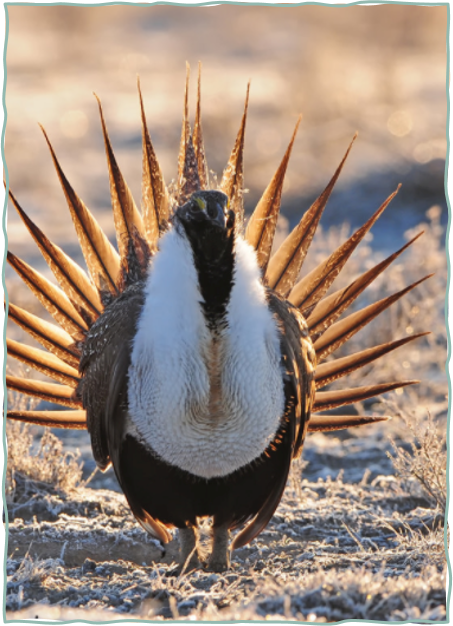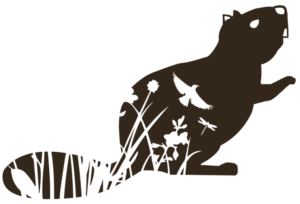
Meadows of Mutuality
The sage grouse knows what it loves. It loves sagebrush and meadows. The beaver knows what it loves. It loves a pond. The beaver can build what it loves. It has known for so long. Maybe for thousands of years. Actually, it has known for millions of years.
What one loves creates what the other loves.
Though they thrive among sage brush, sage grouse need riparian wetlands for ample nourishment for new families. During the fall they fill up on lush vegetation. In winter, they eat sagebrush.
The male bird is famous for his dance ritual for capturing the favor of the female bird. He lifts and puffs his huge chest, which makes a track of soft beats linked together in his own pulsing harmony. Anyone would take notice.
Without this bird, or by losing numbers, we will lose what is referred to as the “western way of life.” The sage grouse is the perfect gardener of sagebrush. 350 species rely on the sage grouse. It is crucial to support healthy numbers of antelope, deer, elk, and key to supporting cattle range. And that brings it back to us.
Nature is steeped in reciprocal relationships. It is natural to reciprocate.
Riciprocus is Latin for back and forth; to and fro; borrowed; loaned; returning; alternating. Everything is designed to be reciprocal. It’s true, we are all one. It is designed this way to encourage us to be in relationship with each other.
The beaver builds its wetland without knowing it helps the sage grouse. The sage grouse doesn’t know the beaver makes the meadow. They have no contract. They just live better with each other in the world. We live better with the sage grouse and the beaver.
-Mary Ann Petersen, Guest Blogger
Mary Ann is a writer living in Eugene, Oregon. In a past life she may have been a beaver. If not, she was definitely a kingfisher or a crow.
www.maryannpetersen.com
 JOIN US in supporting beaver success and native wildlife habitat in our Oregon high desert landscapes.
JOIN US in supporting beaver success and native wildlife habitat in our Oregon high desert landscapes.